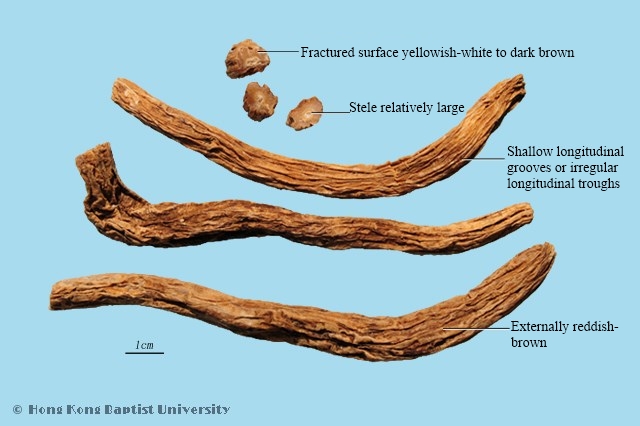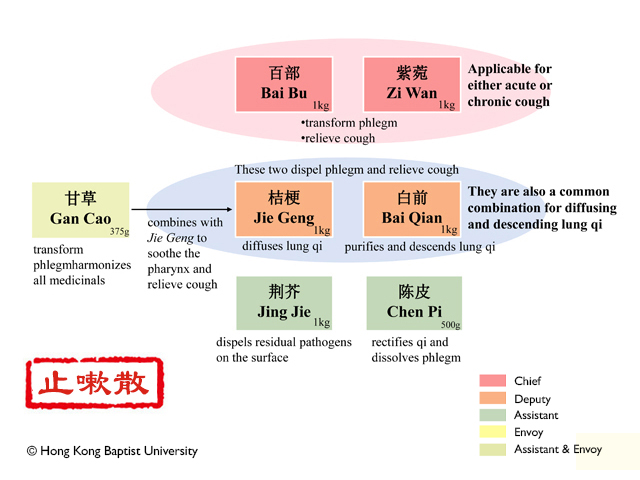Cough-Stopping Powder
Action:Diffuses and benefits the lung qi, disperses wind and relieves cough.
Indication:Zhi Sou San is indicated for the pattern of wind pathogens attacking the lung. The symptoms are cough, itchiness in the pharynx, difficulty in coughing up sputum, or mild aversion to wind and fever. The tongue coating is thin and white, and the pulse is superficial and moderate.

